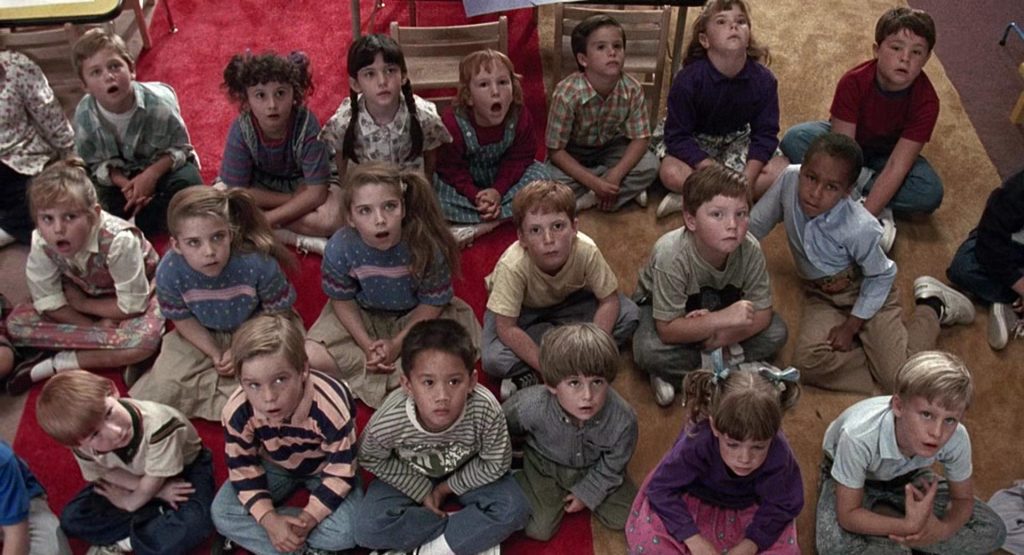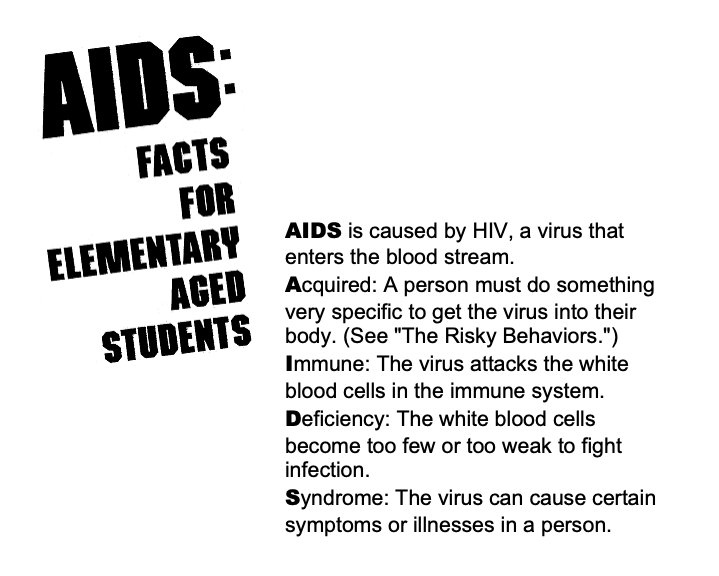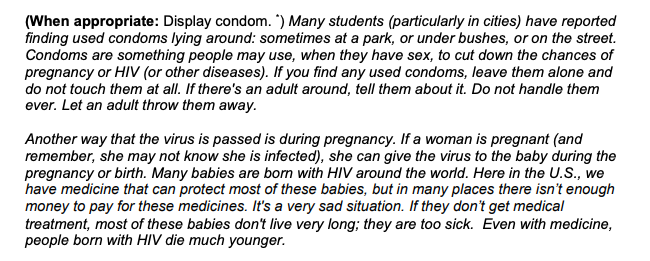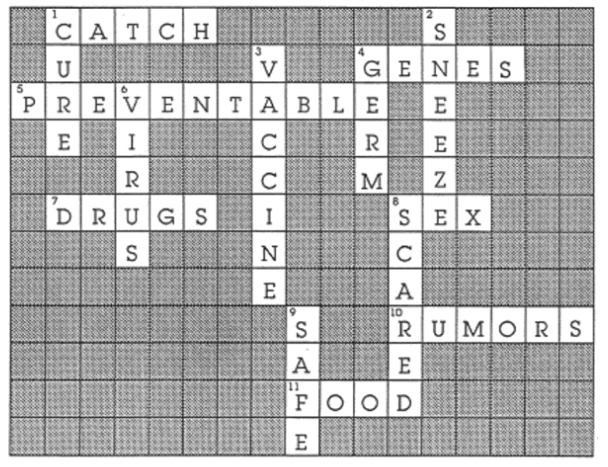A Detailed Look At Washington State’s New HIV Education Plan For Elementary School Kids

As people have begun to live with and around the disease, HIV education has improved. Not only have adults been learning about HIV, but now children are being taught about it. In fact, children as young as the fourth grade get an education on HIV. Since 1989, the state of Washington has had the earliest and most intense sex education in the country. This includes their education on HIV. Education on HIV starts in the fourth grade in Washington and their plan, which was recently updated, doesn’t pull any punches.
We have all the details on what Washington State is planning to teach their elementary fourth graders about HIV, in the coming year.
Washington State’s sexual health education plan for elementary students is broken down into 18 lessons that also include credits and an introduction. The HIV/AIDS education comes towards the end of the entire education in Lessons 15,16, and 17. The first lesson, Lesson 15, is aimed at 4th and 5th graders.
HIV EDUCATION: LESSON 15
Lesson 15 is titled HIV/AIDS, Year 1, Day 1. It begins with 5 Student Learning Objectives and states them clearly. The first one is to help students learn the difference between healthy concern and unhealthy fear. The second one is to help students understand how hard it is to catch HIV, that it is preventable, and it affects very few young children. The third objective is to help students learn the differences between an illness caused by germs (COVID could be a great example) and illnesses caused by other factors. The fourth objective is to teach the definition of “communicable diseases” while giving prime examples. Finally, the fifth student learning objective is to discuss the ways HIV is or is not transmitted.

The lesson 15 guide is well thought out. The material is clear and concise and for teachers who are expected to teach the subject, it offers a number of suggestions on how to delve into these touchy subjects. The lesson plan includes activities for teachers to follow that include discussing with the class why HIV is an important topic in the media, emphasizing why students shouldn’t be fearful but instead concerned, and discussing with students the transmission modes of HIV.
To help kids grasp these HIV education concepts, even more, Lesson 15 also employs a crossword puzzle. The challenge here is to pair kids up and let them complete the puzzle within 5 minutes. Once the five minutes are up, the classroom will gather to discuss the answers.
HIV EDUCATION: LESSON 16
Lesson 16 is titled HIV/AIDS, Year 1, Day 2 and this lesson delves more into the scientific facts of the disease. Students Learning Objectives include understanding the role of white blood cells in fighting off the disease, learning how HIV can outmaneuver a body’s immune system, listing 2 ways HIV is transmitted and 2 ways it is not, and confidently expressing to the students that HIV is mainly an adult disease that is caused by certain adult behaviors.

As this HIV education lesson is a little more in-depth, the materials included are as well. DVDs, if possible, are recommended to help students. The lesson also includes an AIDS: Facts for Elementary Aged Students sheet and a Family Homework Exercise that smartly brings a parent into the discussion with their child.
HIV EDUCATION: LESSON 17
The third and final HIV education lesson, Lesson 17, is aimed at 5th and 6th graders. It is titled HIV/AIDS, Year 2, Day 1. The Student Learning Objectives have increased but they cover how HIV is a blood-borne virus that attacks the body’s immune system. Another objective is to make sure students understand the difference between being infected with HIV and being diagnosed with AIDS. Students will also learn the four ways the disease is transmitted. They are expected to learn that anyone can contract the disease under certain circumstances but that it can’t be passed along through casual contact.

As the HIV education instruction becomes deeper, so do the materials involved. A syringe (without a needle) is part of HIV education as is a condom. To make sure students understand all the material that has been presented, an HIV/AIDS terminology worksheet is included with the lesson plan. Here, students have 11 fill-in-the-blanks questions that will require discussion after completion.
WHY ARE LITTLE KIDS LEARNING ABOUT HIV?
Although the state of Washington is highly regarded, sex education to include HIV education is something that all states teach. Due to the work of Teachers Unions to get it in the curriculum, the approach to sexy-focusing young children in most states is very similar, though the presentation of the materials may differ slightly from state to state.
Article continues below headlines

The Best Type Of Butter Dish For Your Home Kitchen
The history of the butter dish is intertwined with the history of butter itself and the evolution of dining etiquette. …
Continue reading "The Best Type Of Butter Dish For Your Home Kitchen"
The post The Best Type Of Butter Dish For Your Home Kitchen appeared first on Tell Me Best.
Continue
The '80s Horror Fantasy Anime Epic Every Fan Needs To Stream Right Now
Demon City Shinjuku is an animated film focused on demons invading Shinjuku, Tokyo. After a demon gets the upper hand …Continue reading "The ’80s Horror Fantasy Anime Epic Every Fan Needs To Stream Right Now"
ContinueFor many parents of young children it’s difficult to consider HIV/AIDS education as something their kids need to concern themselves with. After all, it’s a sexually transmitted disease and a lot of fourth graders don’t even understand sex, let alone the disease you might get from it. But as Teachers Unions have taken control of school curriculum, they’ve made it one of their missions to get children involved in thinking about and talking about sexy at a younger and younger age. And as a byproduct, then, it only makes sense that they’d need to also talk about AIDS.

It has been nearly 40 years since the very first case of HIV/AIDS was reported in the United States. In the early days, HIV education was non-existent although the fear surrounding the deadly disease was real. By 1995, the mortality rates of those with HIV had reached their peak but still, HIV education was lacking.
1987 saw HIV education required in only 6 states. By the following year, 24 states had it as a requirement. Today, although we have seen numbers drop significantly, HIV is still a major concern. There are more than 1.2 million people living with HIV in the United States. Each year, the US sees over 35,000 new infections. Since the beginning of the AIDS epidemic, a total of just over 700,000 people have died from HIV-related illnesses. That death toll has made many feel it’s important to deliver HIV education at the youngest age possible.







